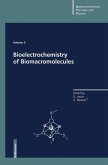Bioelectrochemistry represents an interdisciplinary scientific field linking together relevant areas of biology, medicine, chemistry, and physics. It is therefore not surprising that research in bioelectrochemistry requires the use of a great many experimental methods. These methods are, however, mostly from the methodological arsenal of classical natural sciences so that a description of general principles of common methods of biology, chemistry, physics, and medicine is not presented in this volume. Thus, this volume does not attempt to give an exhaustive survey of techniques used in bioelectrochemical research. The principles of several techniques and methodologies are mainly reviewed from the viewpoint of their specific application in studies of electrochemical and interfacial phenomena in various biological systems involving simple low-molecular-mass molecules of biological significance, biomacro molecules and their conjugates (like for instance chromatine or mem branes), cells and living organisms. The measurements of electrochemical impedance, voltammetric (po larographic) analysis, and spectroelectrochemistry represent a basis for analysis of molecules of biological significance in bulk of solution and at interfaces. These principles are reviewed in the first four chapters. The next three chapters demonstrate how these principles are utilized in voltammetric and interfacial analysis of biomacromolecules such as nucleic acids, proteins, polysaccharides, and viruses in vitro, in the development of biosensors with electrochemical transducers and in in vivo voltammetry.
Bitte wählen Sie Ihr Anliegen aus.
Rechnungen
Retourenschein anfordern
Bestellstatus
Storno








